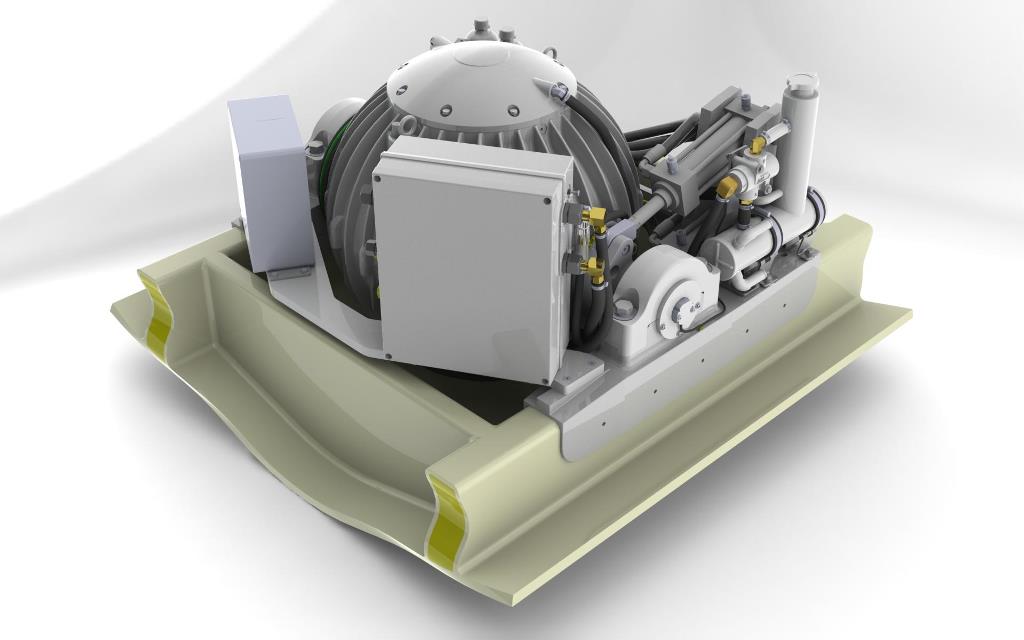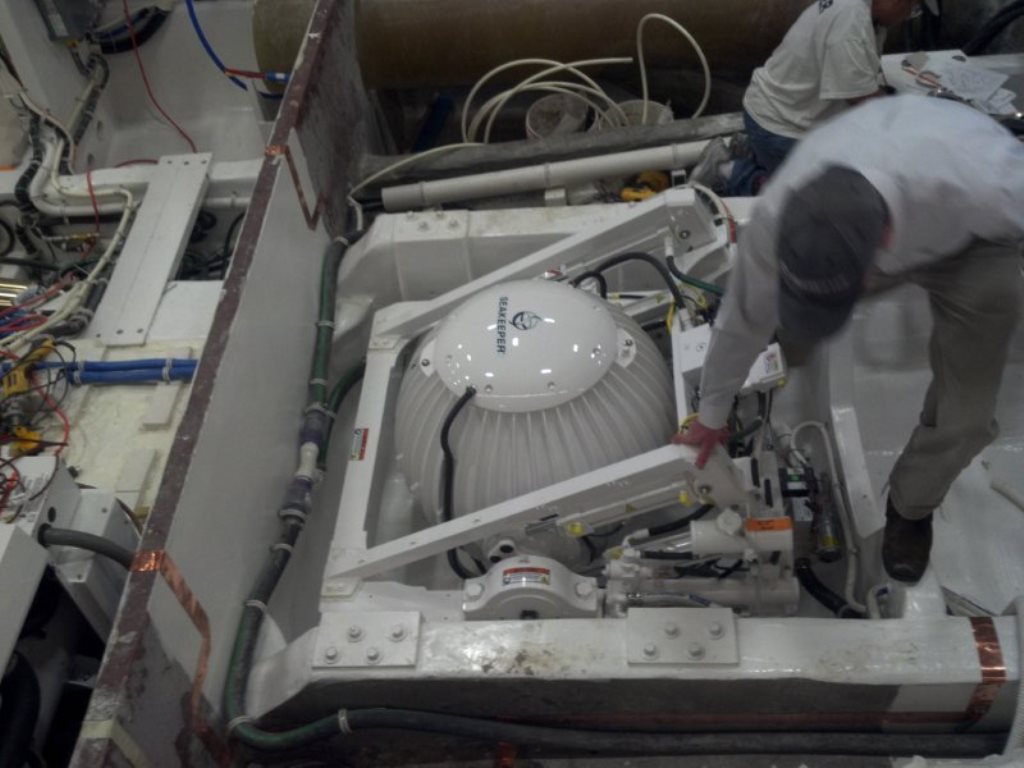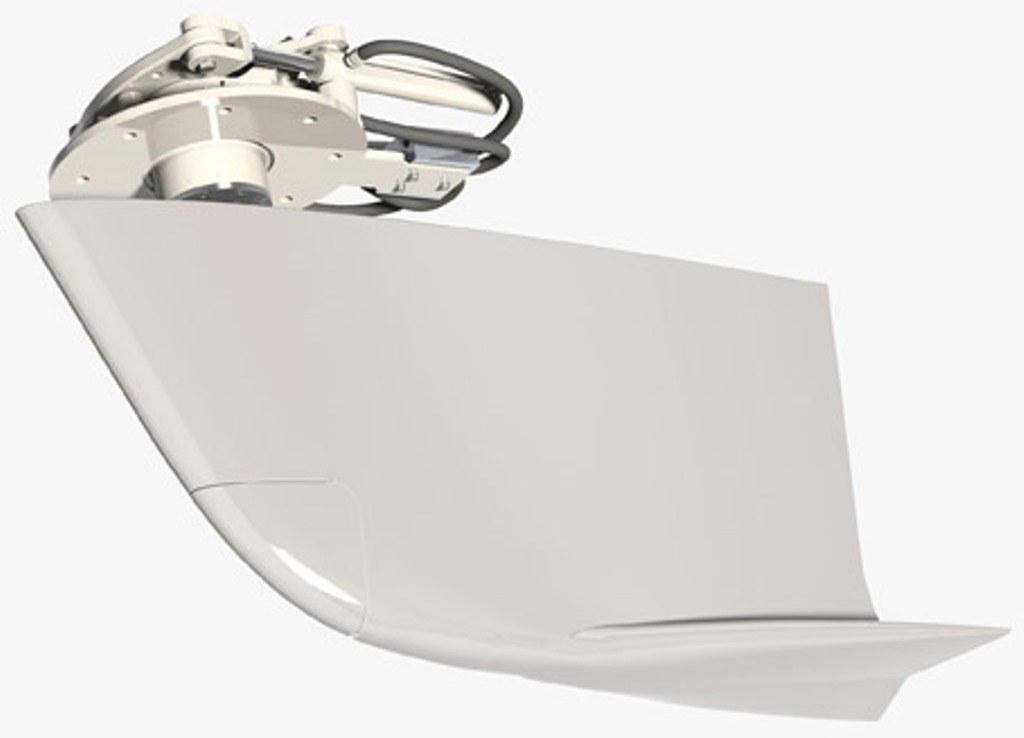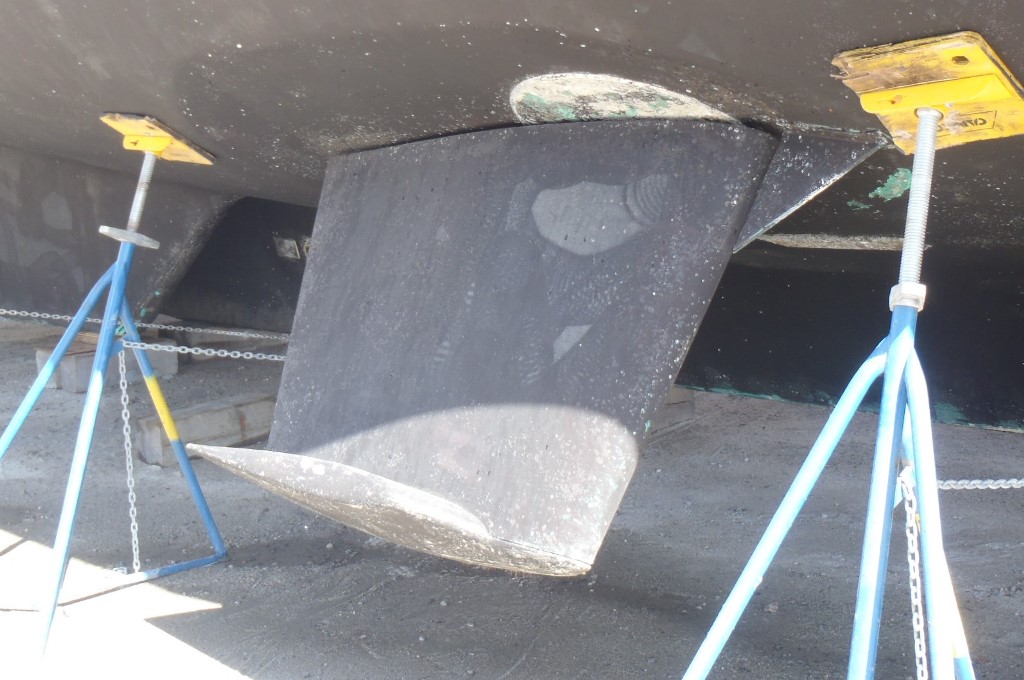Both Gyro and Fin Stabilizers are a great way to reduce the rolling and pitching on a yacht. Having this technology onboard will make cruising and time at anchor more enjoyable, especially for those that are prone to motion sickness.
 Image of a Seakeeper Gyro Stabilizer
Image of a Seakeeper Gyro Stabilizer
What is a Gyro Stabilizer?
It is a computer controlled gyroscope, which is comprised of a flywheel that spins at speeds of up to 10,700RPM and is tilted fore and aft in a range of up to 140 degrees to counteract the wave motion imposed on a yacht. Modern Gyros have been in use in recreational yachts since about 2007.
This video of a Seakeeper Gyro Explains it perfectly:
Benefits of a Gyro Stabilizer:
- Greatly reduces pitch and roll
- Applications from 30′ to over 100′
- Works while at anchor, at the dock, or cruising up to speeds where needed to counteract roll
- No external appendages means less drag while still having stabilization
- Comes in many different sizes and will work in multiple configurations depending on a yacht’s layout, from one large unit to multiple smaller ones
- Does not require much power, from 3kw in startup mode, to 1-2kw when operating
Considerations and Drawbacks of a Gyro Stabilizer:
- The Gyros can take 30-45 minutes to warm up to operating speed
- They take up a considerable amount of space inside your yacht. Some yachts are better laid out for them and others are a real challenge to find the space.
- Gyros need to be mounted to the stringers of the yacht as they enact a large amount of force and stress. If not mounted properly in the right area it can cause considerable damage.
- If included in a new construction yacht, the manufacturer will know how to install properly. If added at a later date, additional stringer reinforcement may be necessary.
- It is a very advanced system and not cheap…before deciding if it is absolutely necessary consider the cost. For example in a 60ft yacht, a rig of 2 smaller gyros could cost up to $250,000.

Seakeeper Gyro Installation in a 77 Hatteras Convertible
What are Fin Stabilizers?
They are fins mounted beneath the waterline of a yacht that emerge laterally at a downward angle. The fins are computer controlled and have the ability to change their angle via a hydraulic system to counteract roll caused by waves or wind.

Modern stabilizer fins have been in recreational yachts since the 1990’s. Since their introduction, they have become smaller and more effective in countering roll forces as new technology has emerged. In the last couple years there have been some large advancements in fin technology, enabling them to be effective even when a yacht is at a standstill, just like a Gyro stabilizer. In addition to the “Zero Speed Stabilization”, fins are also available that will fold up close to the hull to reduce drag, or even retract to reduce surface area…both designs resulting in less loss of speed caused by fin drag. With traditional stabilizer fins you can expect to lose a knot or 2 of speed due to drag, which is why more performance oriented yachts had opted for a gyro stabilizer before those new reduced drag fins became available.
The below video illustrates how a stabilizer fin works (this illustration happens to be for the Zero Speed Stabilizers that also work while the yacht is at a standstill):
Benefits of Fin Stabilizers:
- Greatly reduces pitch and roll
- Applications on yachts from 50 feet to Gigayachts 300ft+
- Depending on the type of fin stabilizer system it will at least work while underway, but newer systems also work while anchored or at rest.
- They take up a very minimal amount of interior yacht space
- Newer fin systems are optimized to reduce drag to maintain a yacht’s performance
- Typically cost less than Gyros and require less maintenance
- No warm up time is required, they can be turned on and off at the flick of a switch
- Should the fins get hit with debris, they are made to break away before the integrity of the hull is compromised
Considerations and Drawbacks of Fin Stabilizers:
- Due to the increased drag from the fins underwater, a yacht will lose a knot or 2 of speed with stabilizer fins added
- With the exterior fin appendages, they can be exposed to floating debris that would potentially cause them damage
- If installed on a new construction yacht, a manufacturer will know to reinforce the area where the fins will be attached, if added later, extra reinforcement will be necessary in the hull area surrounding the fin

Stabilizer Fin on a Yacht that is Hauled out of the Water
In Summary, both the Gyro Stabilizers and Fin Stabilizers are viable options to keep your yacht stable and your guests feeling comfortable. Depending on the type of yacht you own, its layout and its intended use, one of them should come out as the better option. For installation on a new construction yacht, consulting with the manufacturer’s engineers will make the decision more clear. For a retrofit, I would recommend consulting an experienced yacht engineer to make sure the right decision is made.
The direct benefit of the stabilization systems is clear, but also from a yacht broker’s perspective it will result in increased value and desirability come re-sale time.
If you would like to further discuss either Gyro Stabilizer of Fin Stabilizer systems please feel free to reach out to me, Jimmy Rogers, CPYB at 727-453-0422 or e-mail Jimmy@TGYG.com.

